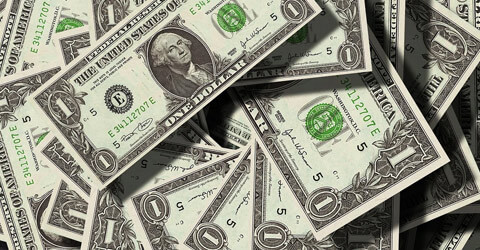In observance of Equal Pay Day celebrated on March 24, 2021, we decided to highlight the topic of sharing salaries that will eventually help us reach equal pay. According to the Gender Pay Gap Report for 2021, women make only $0.82 for every dollar a man makes, which is one cent more than they made in 2020. The report also states that this improvement could be attributable to lower-paid women leaving the workforce due to layoffs that accompanied the pandemic.
However, even in 2021, we face the dilemma that not everyone believes that the gender pay gap exists. According to a SurveyMonkey survey of 8,566 American adults in 2019, 46 per cent of men and 30 percent of women believe that the gender pay gap is ‘made up to serve a political purpose’ and is not a ‘legitimate issue’.
Part of the confusion lies in the misuse of the term ‘gender pay gap.’ The media, out of ignorance, sometimes reports the uncontrolled gender pay gap figure of $0.81 to $1 and then uses the phrase ‘equal pay for equal work’ that is inaccurate and can only apply to the controlled gender pay gap, which is currently $0.98 to every $1 earned by a man.
Speculative reporting can also sometimes undermine gender pay as a critical issue. In the case of Lisa Wilkinson’s (Australian Television Presenter) pay row, there was speculation whether her role was equivalent to that of her co-host, Karl Stefanovic. In response to allegations of gender discrimination, the network released a statement noting differences in responsibilities between the two media personalities. Wilkinson’s commercial arrangements outside the network may have restricted her from engaging in digital and social media duties. In contrast, the co-presenter worked exclusively for the network, including on other shows. No conclusive and fact-based analysis was presented and she ended up quitting her job as her demands were not met.
According to the World Economic Forum, global gender parity will not be achieved with the current change and progress rate for another 99.5 years. So what can we do to fasten this process?
Experiment Conducted by PayScale
Using data from its platform, PayScale analyzed over 1.6 million survey responses in the U.S. on salaries. It looked at almost 400,000 responses from women who specifically spoke about pay transparency at their work.
For women who agreed that their organization was transparent about its employees’ pay, PayScale found that women earned between $1 and $1.01, on average, for every $1 a man earned at their company.
However, women who strongly disagreed that their organization was transparent about salary earned, on average, earned 97 cents for every dollar earned by their male colleagues who had the same experience, did the same job and lived in the same area.
Though a three-cent difference may seem minuscule, PayScale’s CEO Scott Torrey points out that this difference in pay can quickly add up to a significant loss over the course of a woman’s career.
When companies are open and transparent about the salaries they give all their employees, PayScale found that the gender wage gap in most industries and at all job levels disappeared.
Pay Transparency Is The Solution
There are many success stories of women standing up to get their rightful pay once they realized they were being paid less. For instance, when the Sony hack revealed that actress Charlize Theron made $10 million less than her male co-star, Chris Hemsworth, Theron took action and got what was rightfully hers. It’s a natural response; we all want to be treated fairly and get paid for the hard work that we put in. Finding out what other people earn makes the pay gap problem self-correcting. Women who work in organizations with open pay structures need not fear that their pay is not commensurate with their male colleagues; instead, they’ll know if it’s not.
In conclusion, after identifying a way to reduce the gender wage gap, we can see positive momentum towards pay transparency. As Scott Cawood, WorldatWork’s President and CEO, said, “As organizations address potential areas of unintended bias with pay systems, it’s reassuring to see that pay transparency is becoming more of a priority,” and we are moving in the right direction.








